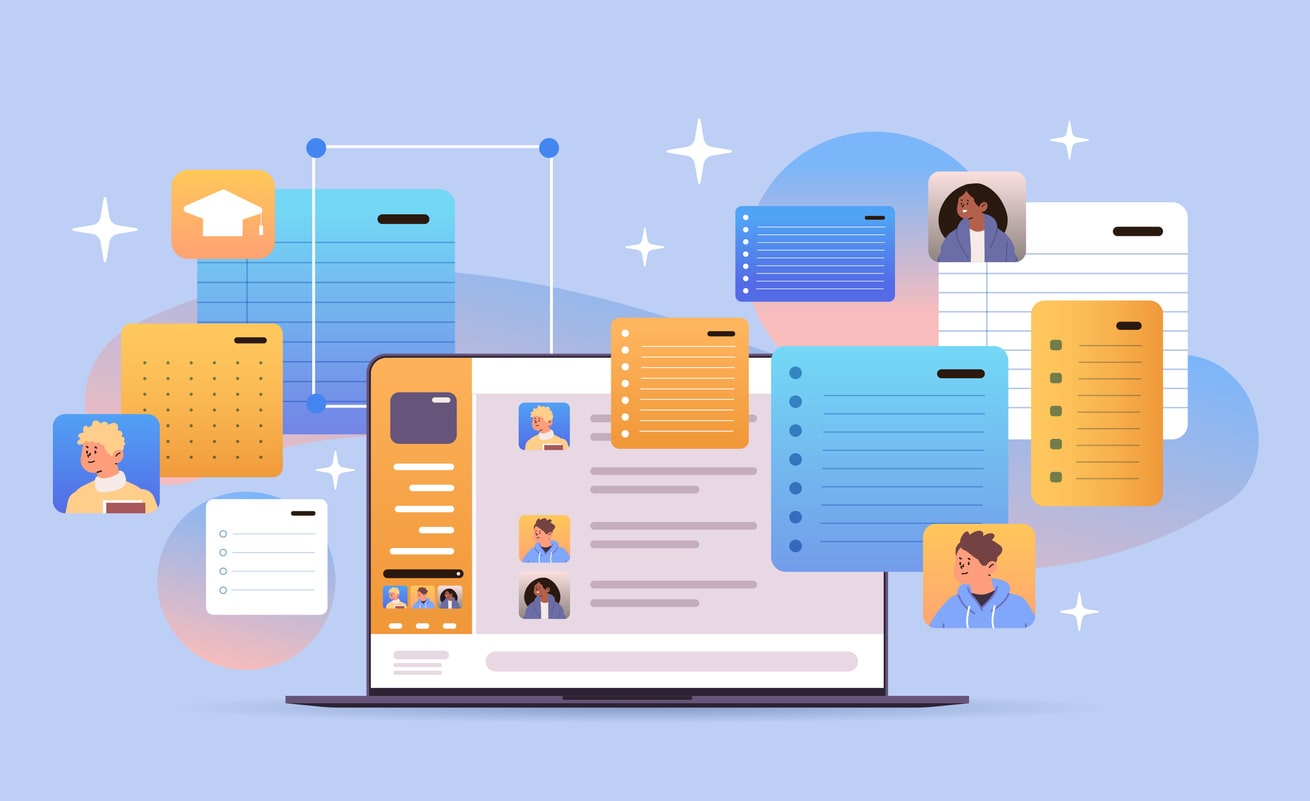Enough about the second thoughts already! No, we are not trying to sell you anything here.
Look around you, eLearning is as common as the devices around us. Just read on to discover why.
Savings of trainings
Seriously, the initial set-up costs for a learning management system and eLearning are at an all time low, now with the rise of the “cloud”. Once completely set up, you will notice that you no longer need to print out training manuals or even pay for on-site facilitators. There will be an overall reduction in training costs. All the trainings and job-aids will be found on your online learning management system.
The benefits of cloud based learning management systems will be even more evident as employees and management enjoy flexible training strategies and delivery methods.
Immediate content deployment
In an online collaboration system, knowledge is created on-the-go. New learning needs are established and information for such needs is readily available for course content. Course development is not only rapid, but also flexible in terms of editing content, user-accessibility, language translations, scoring and other behavioral statistics.
Think about the wait and frustration over printing and distributing learning content. Also, training can be deployed as soon as a gap in performance is detected.
For example, if you notice that your customer service help desk staff may be in need of some additional training based upon depreciating figures, you can organize an online webinar in your learning management system or assign them a customer service online course that focuses on the core skills that need to be cultivated.
Access to the required information
There is a difference between “good to know” and “need to know” information. Very often instructional designers and trainers cram surplus information that effectively lose the learners instead of engaging them! Online information exchange systems allow trainers to detect the most in-demand information and make it available immediately. The required information is available whenever and wherever it is needed.
For instance, if a member of staff needs to recollect the company refund and credit transfer policy, they can simply log into the LMS and click on the customer service module to access the required information. This also means that you can update your learners with the latest company policies and procedures for best practices and performance.
Enhanced learning and transfer
eLearning development is not linear as the paper format trainings. Nor is eLearning as predictable as a power point slide show. Integrating a “learning by doing” style in eLearning through the concept of constructionism is the new hype.
This means that your learners will be engaged in real-world-like scenarios that promote meaningful decision making. Current course authoring tools enable trainers to create an immersive learning environment in an effort to keep up with the “content relevance” and “immediate transfer” of learning materials.
Presenting learning material in the form of multimedia and in small chunks also encourages enhanced retention and transfer to work context.
Self-paced learning
Adult learners crave for control over their learning. Time and deadlines are a turn-off for most of us. Flexibility in progressing through the course as well as deciding where to begin (skipping material we already know) is motivating to us.
This not only places more responsibility on the learner, but also a sense of ownership and pride in learning. Slower learners also appreciate the value of the content as they absorb the facts at their own pace.
On-site vs online instructors
Think about savings in the eliminated need for a live, hefty fee demanding instructor. The same instructor, if available online, will demand a lower fee, owing to time independent course moderation and occasional comments for learners. This includes savings in travel time, car gas, parking or possibly hotel arrangements.
Moreover, employees do not need to skip valuable work time to participate in on-site trainings or time-dependent online trainings. They can continue learning in their down-time, both at work and at home.
Rapid and timely updates
No need to rewrite manuals and print employee handbooks. Simply edit and create a new version and deploy it online. Think about these added savings.
Some updates are better made using announcements and notifications. Simply ping your employees each time something urgent or relevant is to be shared. These features are especially useful in encouraging employees’ opinions on a new policy, disseminating the launch of a new product and also inviting for an urgent meeting with the CEO.
Access to relevant resources
Corporate learning is usually all about best practices and latest research. Senior professionals seek out journals and periodicals to keep themselves updated.
Launch your corporate newsletter or an outsourced journal on your learning management system. Highlight the latest practice and invite learners to read the articles or blogs by providing shortcut links.
By including links to articles, webinars, and videos and blogs you are providing your employees with references and information that they can use to increase their knowledge and fine-tune their skill sets.
Improve Employee Productivity
Now how exactly does eLearning do that? Simple, two ways:
1) Enabling employees to train at their own pace
2) Administering interactive courses that encourage greater retention and transfer to work context.
These are bound to improve employee productivity. For individuals who are experienced and knowledgeable, they can be involved in the course development and mentoring process.
This will lead to a more organization-centered eLearning program as compared to off-the-shelf trainings. There is nothing better than coworker mentorship, also supported by collaboration features in the learning management system.
Reduced employee turnover rates
The leading reason why employees, especially the really talented ones leave a company is the lack of professional trainings. By investing in eLearning, you not only improve your company’s credibility, but also demonstrate your value in education and knowledge development. This can be the single most attracting factor when you hire or retain employees.
When employees feel themselves growing in their careers, they are more loyal to the organization and want to give their best. Also, eLearning is increasingly becoming platform independent, which means, your employees should be able to access their material using tablets and mobile phones.
Invest in eLearning
If you want to develop better employees through establishing a learning organization, eLearning investment is the way to go!
| Tags: Training ROI



